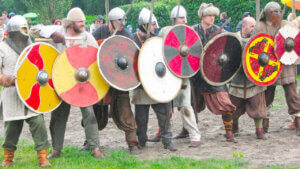
Argentina is one of the largest countries in South America and boasts a fascinating history and culture. This article focuses on how folk saints not recognized by the Catholic Church, still influence death beliefs in Argentina. Adding to that we also discuss the role of the financial crisis in modern day Argentine funerals. Finally, we go back in time – specifically 19th century tribal Patagonia. There we discuss Mapuche death beliefs and social structures. And especially how customs such as canoe funerals and even human sacrifice are connected to them.

Catholicism is the dominant religion in most Latin American countries. It would not be accurate, though, to assume that as a result there is no variation among countries. An example of this variety of religious practices are the so-called folk saints. The term refers to saints not recognized by the Catholic church as such, but still venerated by locals. Santa Claus is perhaps the most well-known case of such a saint. However, Argentina has its own folk saint and some of them have an interesting connection to death. The three folk saints we focus on are El Angelito Milagroso, Difunta Correa and San La Muerte.
This folk saint traces back to Miguel Ángel Gaitán, a one year old baby that died of meningitis. He became a saint to the eyes of the public after his coffin was unearthed during a storm. Although that was seven years after his death, his body was particularly well-preserved. People built the infant a new grave four times, since they were all collapsing. As a result, the family considered this a sign that the baby did not want to be hidden away. Therefore, locals decided to make him a glass case and after that the soul of the infant seemed appeased. Even until nowadays, El Angelito Milagroso is seen as a saint by many Argentinians who visit his glass casket to pray for miracles.
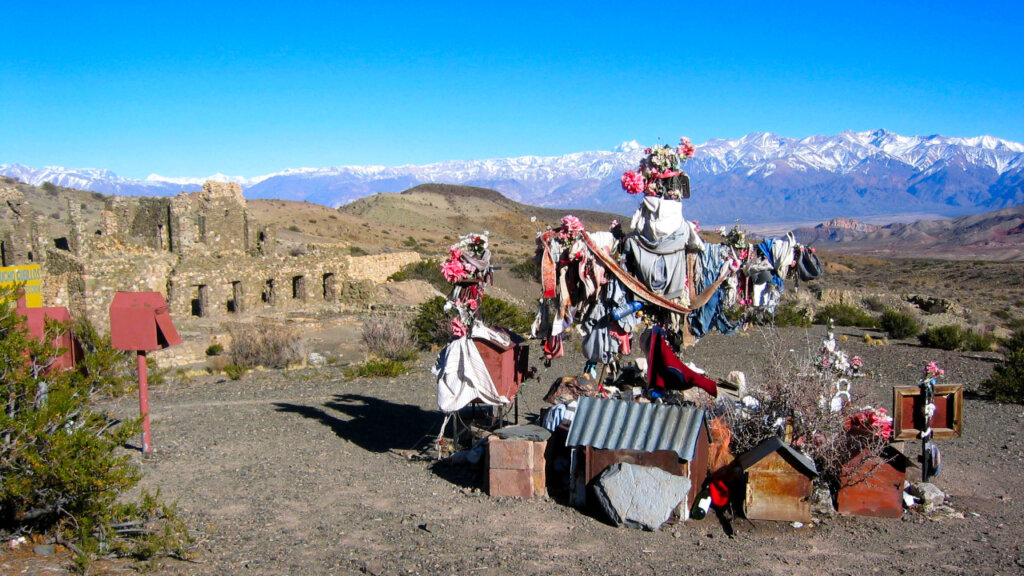
The origin of the next folk saint goes all the way back to the early 1840s. Legend has it that a woman called Deolinda Correa had recently given birth. However, her husband was forced to fight during the ongoing Argentine Civil Wars, only to soon be abandoned after falling sick.
When Deolinda found out she desperately took her baby and tried to reach her husband. In order to do so though she had to cross a desert in modern-day San Juan. Deolinda tried her best but eventually she ran out of food and passed away. Miraculously, though, the baby made it. Gauchos, horsemen, found the baby still breastfeeding on the corpse of the woman. They respectfully buried her body in Vallecito and eventually the stories of the woman helping her baby from beyond the grave spread.
As a result, locals slowly transformed her burial site into a sanctuary. Gauchos and in later years truck drivers too, spread the tale of the Correa woman performing miracles – starting with her own child. Wayside shrines to Difunta Correa are not uncommon since even nowadays people are asking for her assistance with all sorts of matters. In a moving way, visitors to these wayside shrines or Correa’s original burial site often present bottles of water to her. This way she can quench the thirst that she has due to dying in the desert. Such gifts to saints or spirits are referred to as votive offerings and they often aim to gain favor with these entities.
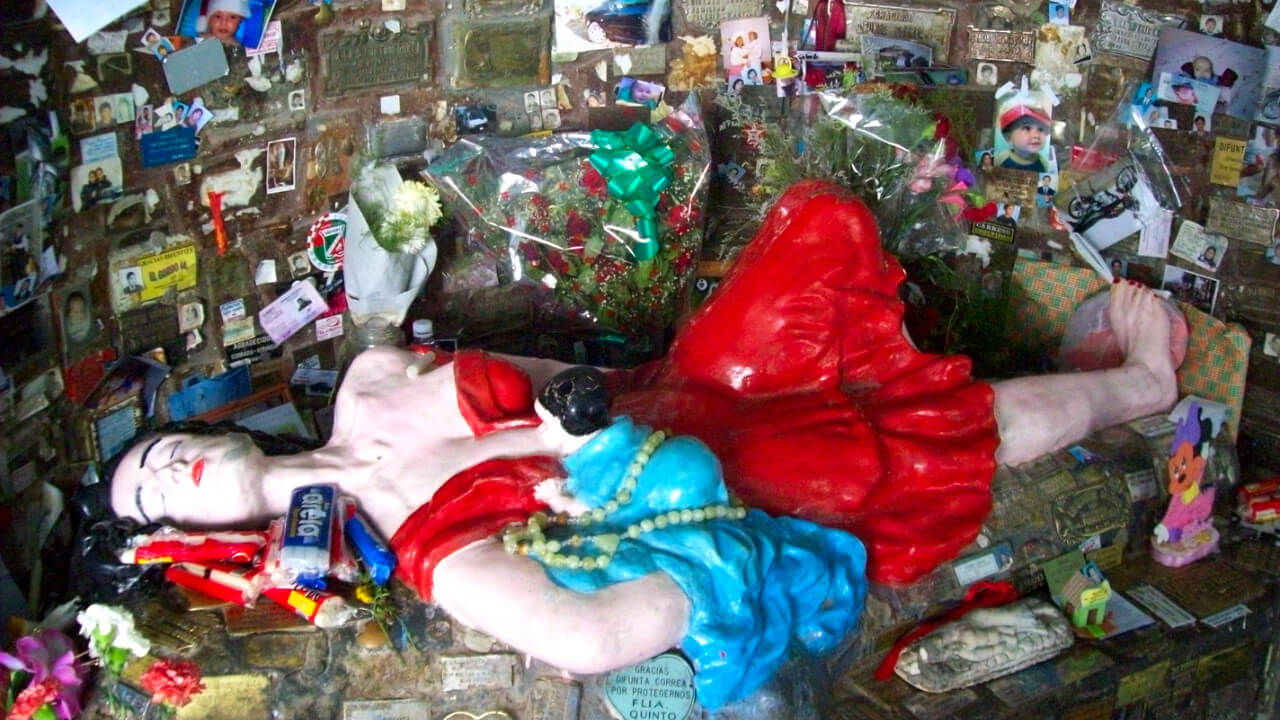
For at least the last 80 years the original burial site of Correa at Vallecito has greatly expanded. Nowadays it resembles a small town, including 17 chapels (2005) completely full with offerings to the folk saint.
These are around the hill where Correa was buried. However, Correa’s first chapel on the hill even features a lifesize statue of her corpse while her baby is breastfeeding. All the chapels remain busy throughout the year but receive even more visitors during All-Souls Day. Locals claim that up to 200.000 people are visiting Difunta Correa on such special occasions.
Although Difunta Correa is one of the most popular folk saints related to death, there is one that has an even closer connection to it. We are of course referring to San La Muerte, directly translating to Saint Death. It is worth pointing out that despite all the similarities, San La Muerte should not be confused with Santa Muerte. This refers to another folk saint that mostly Mexican and some Americans venerate.
In Argentina – and other Latin American countries – San La Muerte is an actual saint, while sharing many attributes with the grim reaper. For instance, both are personifications of death, usually thought of as hooded skeletons wielding a scythe. Although originally the cult of San La Muerte was mostly popular in the Corrientes Province, it has now spread. Specifically, starting in the 1960s more followers were present in the greater area of Buenos Aires as well as prisons in Argentina.
Just like with the aforementioned folk saints, the Catholic Church is not accepting their legitimacy. It also announced that any veneration to San La Muerte is going against the teachings of the Bible, and is thus paganism. That had little effect in reality though, since most devotees of Saint Death view their beliefs towards the saint as a part of their Catholicism.
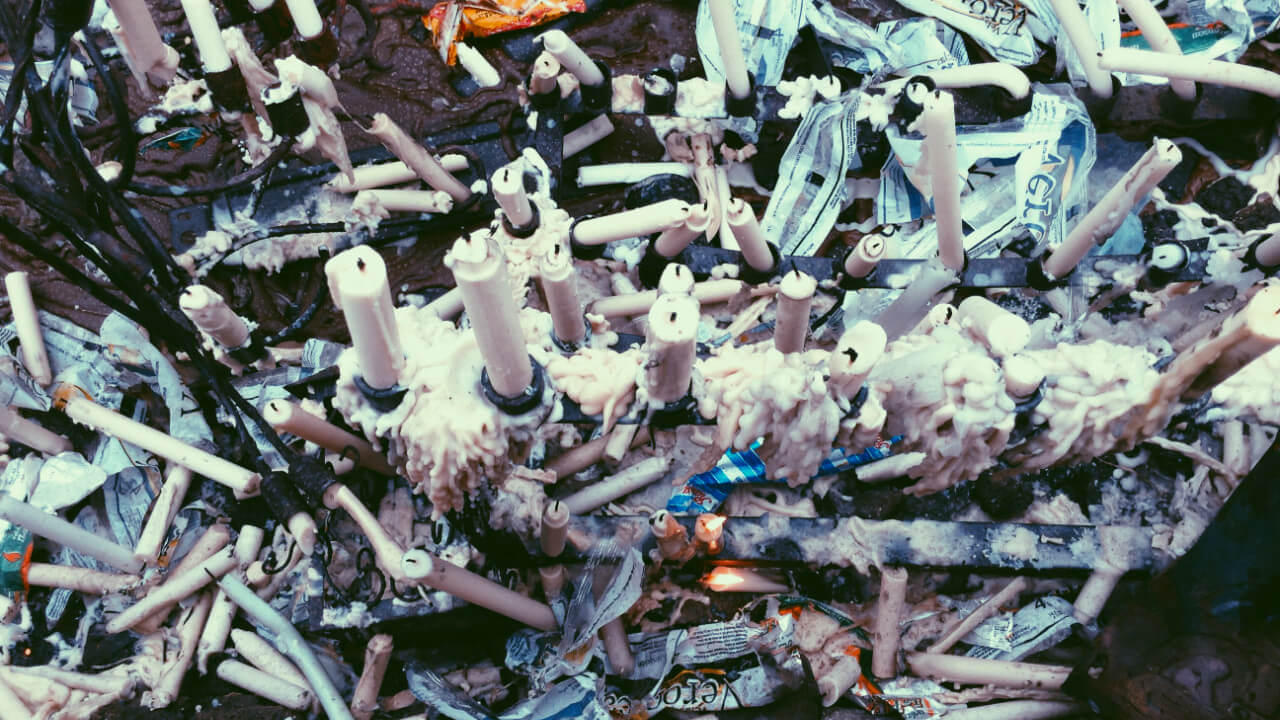
Venerating San La Muerte can be quite different from praying to other folk saints. Although veneration includes prayers and offerings, it does not stop there. For example, offerings could even include one’s own blood. Correspondingly, the favors someone asks of Saint Death may differ than what they would ask of other saints. Health, fortune and luck are usual requests but Saint Death also focuses violence and even, well, death. In relation to the saint’s popularity within the prison system, people may pray to San La Muerte for their inmates – or to avoid prison altogether. Rumors have it that one could even pray to Saint Death for his enemies’ demise.
Another interesting point of Saint Death veneration is that the favor system is almost reversed. In other words, people usually ask favors from a saint by trying to be on their good side. That is not the case, though, with Saint Death. His followers actually demand that the saint fulfills their wishes. As a result, they are trying to bend the saint to their will.
Folk saints and Catholicism define, to an extent, death beliefs in Argentina. They are not the only factors that influence death practices and funeral services, however.
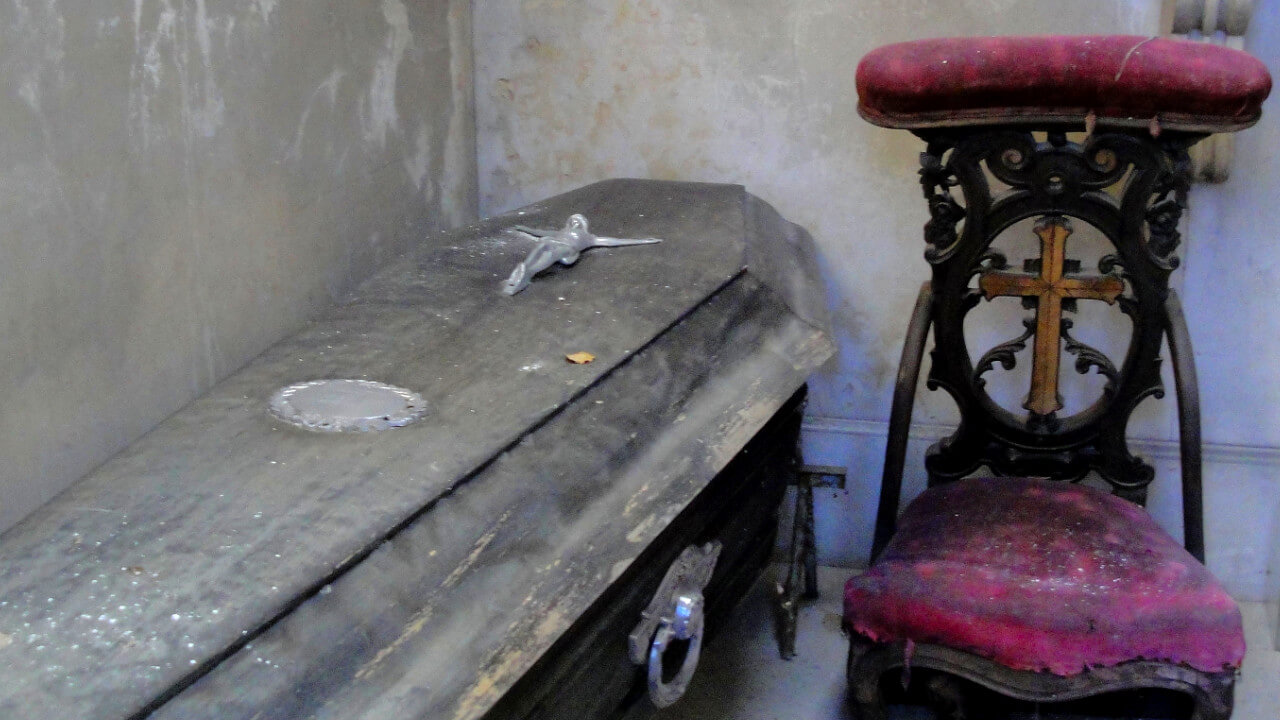
The recent financial crisis hit Argentina particularly hard. Researchers have also indicated that in such occasions differences in funerary practices are to be expected. Indeed, many services are unaffordable by most Argentinians. As a result, more people are opting for cremations or direct burials in place of the more elaborate traditional burial and wake.
For instance, the cheapest funeral option costs around 25.000 pesos (415 USD), almost 10.000 more than the minimum wage! This service does not even include a wake. More lavish funerals could easily reach 180.000 pesos but almost no one can pay that. As a result, almost 80% (2018) of people in Buenos Aires are cremated instead of being buried. Even then, few choose to keep the urn with the ashes in a niche at the cemetery since they have to pay rent. Prices for such rents vary from 400 to 2.000 pesos per month.

Maintaining graves is not cheap either. Although it usually costs around 500 pesos, most Argentinians choose to spend their salaries otherwise. As a result, many graves are not regularly cleaned. In some cases overgrown vegetation and even human remains are visible in certain niches of cemeteries in Buenos Aires.
For this next part we are traveling back in time in order to explore indigenous funerals.
Many Native American groups lived in regions that belong to multiple modern-day nations. Additionally, indigenous concepts of death and funerary practices in northern Patagonia were similar on both sides of the Andes. That is also the case for the Mapuche people. Nowadays they mostly live in Chile and some groups live in Argentina. We are next discussing their 19th century funerary practices in modern-day Chimpay municipality of the Río Negro Province in Argentina.

The Mapuche saw death as a trip to a faraway land: Allhue Mapu. It was a place of myths and legends and the souls had to cross the western ocean. As a result, it was significant that the deceased had with them certain personal belongings that could help with the travels. One’s possessions were also a marker of their position in their community. Therefore, it is clear that not everyone received the same funerary rites. Hierarchy, politics and gender played an important role in how someone can reach Allhue Mapu!
Hierarchy and politics are expected to play a role in determining funeral rites especially among tribal settings. For instance, a Mapuche chief receives a more lavish ceremony than a “cona” – a commoner. The more important the deceased, the more people attended. That meant that funerals could take place even weeks after death so people could have enough time to travel to the location. The funeral itself also was an affair that lasted multiple days.
Men were riding horses around the corpse as a sign of honor and even competed in horse races (“trilla”). Women were participating as mourners. Depending on the politics of the tribe, the deceased could also receive sheep offerings during the funeral.
Additionally, research on 19th century Mapuche funerary customs revealed the existence of different types of burials. For instance, chiefs and shamans as well as richer men could have their own cuel, a burial mound. If possible, the Mapuche also practiced a form of water burial, by using canoes. For example, the placed the body in the canoe, and added a small wooden human effigy.
However, the most particular Mapuche funeral practice was the sacrifice of women. Next, we discuss two different types of such a custom: the kalkutun and the sutte.
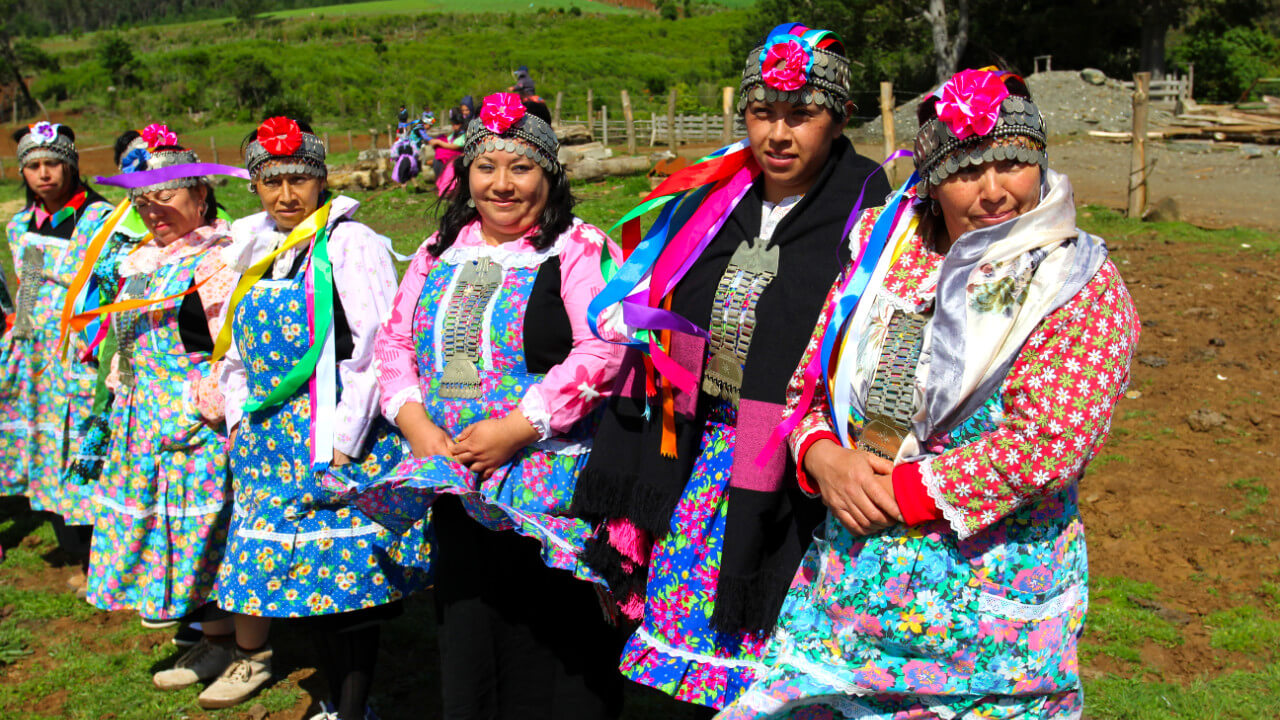
The practice of kalkutun was probably taking place for the funeral of chiefs. 19th century Mapuche beliefs said that death could often be a result of witchcraft. Therefore, the witch (“kalku”) needed to be found and killed. Only then was there balance within the community. Moreover, the local shaman (“machi”) had to try to identify the kalku. As a result of these traditions, the Mapuche were trying to create order after the loss of a chief who was a central figure in their community
Researchers have supported that almost every death of a chief is accomplished by burning the witch – or witches! – responsible. Additionally, although kalkutun seems to always take place for chiefs, it doesn’t mean that it didn’t for other Mapuche.
Except for the kalkutun though, indigenous tribes in the Pampas lowlands also practiced the so-called suttee. It refers to women being buried alongside men. There have been testimonies of women grieving so intensely that they asked to be buried with their husbands. However, that does not seem to necessarily be the case for suttee. For example, graves of the Tehuelche people in Southern Patagonia have sometimes contained two women – potentially wives – buried with a man. The grim conclusion that the findings seem to lead to is that the women were sacrificed to be buried with the man.
As a result, present time researchers see the suttee – as well as the kalkutun to an extent – as a way of exerting power over women. This way the men involved reaffirmed their own position and leadership. It is worth mentioning that even nowadays, these old death practices have not been interpreted with complete certainty.
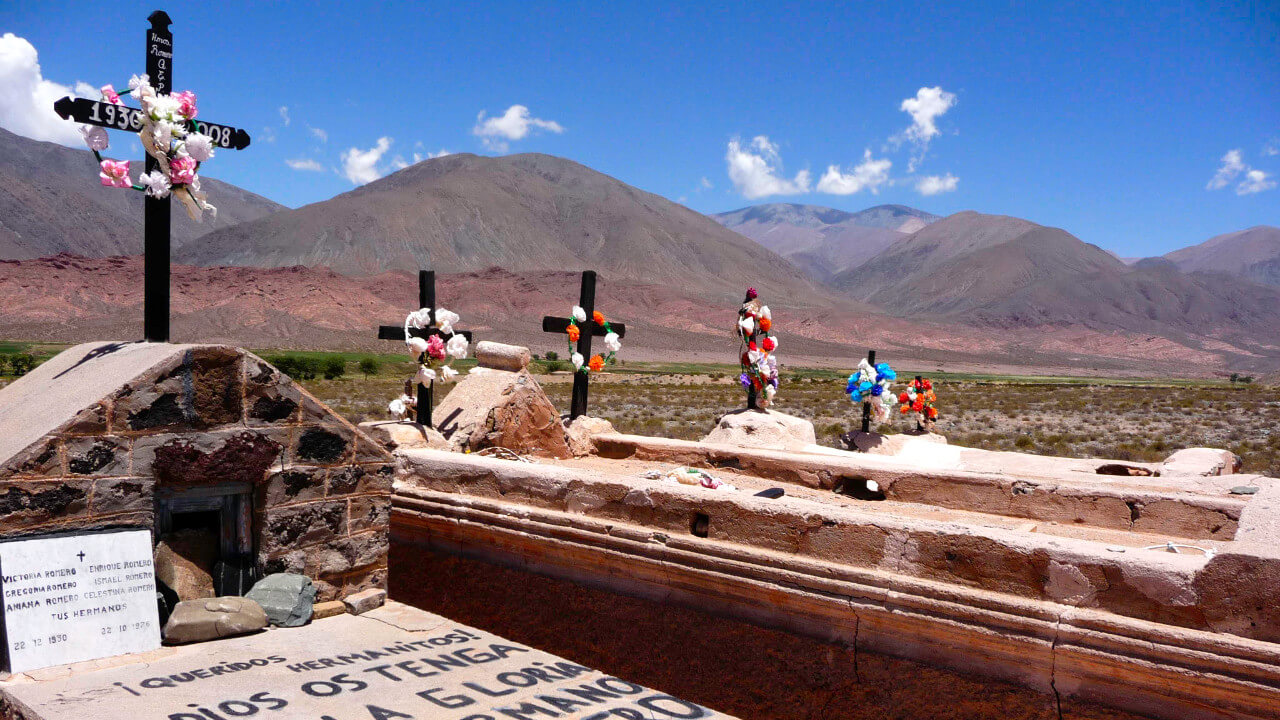
We hope you learned something new regarding this country’s death practices!
If you want know more about other funerary practices in Latin America, feel free to check out our Peru and Mexico articles! Did you find the idea of Saint Death interesting? You can also read more on the French origins of the Grim Reaper here.
The average mixed death rate of Argentina is 7,604 per 1.000 people (2019).
That depends on the kind of funeral the deceased receives. If they preferred a traditional funeral, the process takes longer. As a result they are buried a bit later. In case they opted for a simpler funeral (with no wake, for instance), they are buried as soon as possible since they are not embalmed. Cremations also tend to take place soon after death.
Argentina is mostly a Christian country, with a distinct presence of Roman Catholicism. That should not come as a surprise as it is the case in most Latin American countries. Originating from the Spanish conquerors, Catholicism spread in Argentina. With the arrival of other European immigrants, other Christian denominations took root too. Moreover, at least 10% of Argentinians identify as irreligious.
Moreover, Argentina is home to the largest population of Muslims in South America. Finally, it is perhaps funny to mention here the Iglesia Maradoniana religion. It is a sport themed so-called parody religion that revolves around famous football player Diego Maradona. Three men started the religion as a joke at a Christmas party. However it has approximately between 120,000 to 200,000 ‘followers’ since its conception.
Argentina’s rate of utilized organs was 9,11 per million people (2020). That corresponds to 413 actual donated organs that doctors used for transplantations.